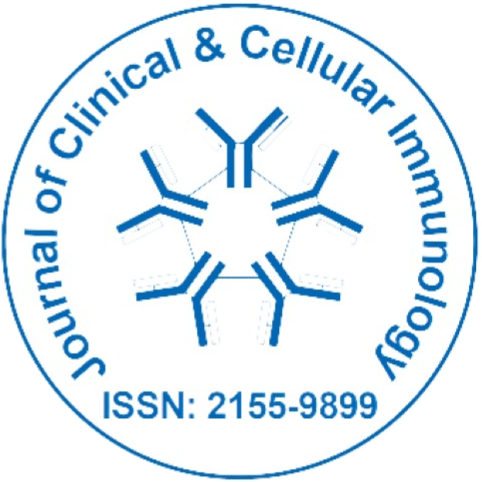
Journal of Clinical and Cellular Immunology
Open Access
ISSN: 2155-9899

ISSN: 2155-9899
Nagarathna S
National Institute of Mental Health And Neurosciences, India
Keynote: J Clin Cell Immunol
Cryptococcosis is an invasive mycosis caused by pathogenic encapsulated yeasts in the genus Cryptococcus. It is the most common fungal disease in HIV-infected persons, and it is the AIDS-defining illness for 60–70% of HIV-infected patients. It is estimated that annually, there are 152 000 cases of cryptococcal meningitis, resulting in 112 000 cryptococcal-related deaths. Globally, cryptococcal disease accounts for 19% of AIDS-related mortality. Cryptococcus is a genus of basidiomycetous fungi ubiquitously distributed in the environment. Two species were commonly known to cause human disease, C neoformans and C gattii till recently. Historically, the genus was further classified into 3 varieties, 5 serotypes, and 8 molecular subtypes .. At present, the following divisions have been proposed: C neoformans var. grubii (serotype A) with 3 genotypes (VNI, VNII, VNB); C neoformans var. neoformans (serotype D or VNIV); and 5 other cryptic species, C gattii, C bacillisporus, C deuterogattii, C tetragattii, and C decagattii (serotypes B/C or VGI-IV). Cryptococcus neoformans complex (C neoformans var neoformans , and C neoformans var grubii) is found throughout the world in association with excreta from certain birds such as pigeons. C gattii is commonly associated with several species of eucalyptus trees in tropical and subtropical climates. C neoformans complex causes disease in both immunocompromised and apparently immunocompetent hosts. C gattii, conversely, has historically been regarded as a pathogen of apparently immunocompetent patients. Cryptococcus primarily enters the human body by inhalation of the infectious propagules from environmental reservoirs and gets deposited into pulmonary alveoli and can remain dormant for many years. Cryptococcus is a neurotropic fungus with special predilection to CNS.Impaired cell-mediated immunity and as the CD4+ cell count falls below 100 cells/μL the organism may reach the CNS through several mechanisms mediated by several molecular pathways.
Prof. Nagarathna S is a distinguished academic and researcher in the Department of Neuromicrobiology at the National Institute of Mental Health and Neurosciences (NIMHANS), Bengaluru. With an MD in her field, she has dedicated her career to advancing knowledge in neuromicrobiology, particularly within mental health and neuroscience disciplines. Her work has greatly influenced both clinical practices and scientific research, addressing critical neurological challenges. Prof. Nagarathna is known for her commitment to excellence in research and education, contributing to innovations that aid in understanding complex neurological disorders.